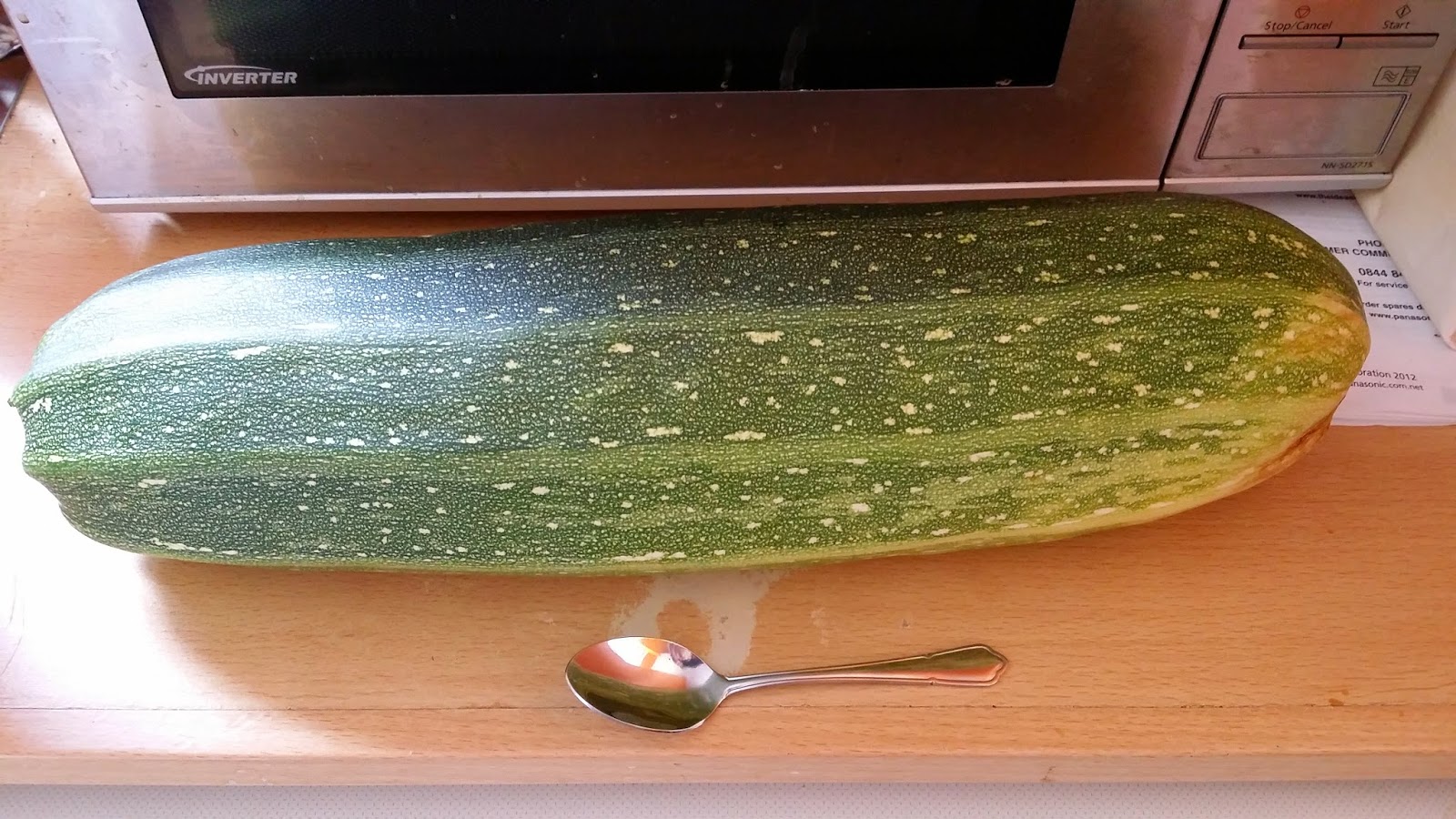My eldest sister last year acquired a garden of her very own and was very taken with the idea of copying my grow-your-own efforts. I recommended a brassica cage, a few plants that were rewarding to grow, and a few bits of hard-won advice that I'd worked out from two years of experimentation. One of the things I especially recommended was a courgette plant, which would also be my first recommendation to anyone looking to dip their toe into GYO.
Five reasons to grow courgettes at home:
1) They're very hard to kill and very easy to grow. If they weren't so useful, I'd swear they were a weed.
2) They produce loads of fruit*. One plant alone will do plenty for the average person's needs and two will keep you very well stocked.
3) They're perfect for container gardening - they can grow in even quite a small pot, so so excellent surface area/food ratio and brilliant if you don't have anything but a patio.
4) They are very cheap - I got my pots at Poundland and my seeds at Lidl, so all I really had to pay for was the dirt.
5) They taste completely different when grown at home to the rubbery, tasteless mushy stuff that populates supermarkets, especially if you go for a yellow-skinned variety which are far more tender and far less bitter than the green ones that you're thinking of if you're making that face. Yes, I can see you doing it. Cut it out and give them a chance.
Growing courgettes is the simplest thing you'll ever do in a garden. You can either sow the seeds inside in April in little seed trays and then repot the seedlings outside in May, or you can just sow them directly into the big pots in May. They will grow without too much attention from you and form big-leafed spiky plants with plenty of flowers. Each flower will elongate out into a stalk that will thicken into a courgette. The size of courgette possible will depend on the size of the pot that it's in and you'll learn to recognise that after the first few. When they're at optimum size, twist it off straight away and then the plant will focus on growing more. A well-fed plant will produce one a week - I feed mine every other day (or so) with Tomorite, which is £3 for about 100 doses and produce results along this sort of size:
No traditional teaspoon for size-comparison today, so that dish they're in is the size of a small plate. Just in case you were curious.
Now, my sister has grown her courgette plant in the ground, inside the brassica cage, against my recommendations. I was of the opinion that she could get another broccoli plant in there and using space in the cage was a waste for a plant that caterpillars don't eat. However, she wanted everything together and so overrode me and put it into the ground. Now, both of us are rueing our decisions, for different reasons.
She offered to give me a courgette from her garden this weekend and I arranged to trade her one of my yellows for her green, as I thought it would keep to the spirit of the challenge. I wouldn't be importing food, but swapping it, meaning that the vegetable would still be the result of my garden. I knew my sister said they'd grown very big, so I cultivated the biggest courgette I could with extra feeds and watering, to make sure it was an even trade.
I'll spoil the ending and let you know that it wasn't really an even trade
My sister has managed to grow a marrow. It's got to be at least two foot long and for girth I can't quite reach all the way round it even if I'm using both hands. I had to put a plastic bag over the end after I cut it for its first use and it was alarmingly akin to applying a condom to the Incredible Hulk.
HULK TRUST YOU, BUT PREFER TO GET MUTUAL STD TESTS DONE BEFORE SMASHING BAREBACK!
Apparently the plant itself has taken over the bed and is bullying the brussel sprouts, who are normally the big kid in the playground. It also defends its bounty by hiding the fruit in thick leaf cover and spikes that are verging on thorns. Needless to say, next year she plans to take my advice and grow in pots, while I'm already working out which bed I can set to one side to grow my own monster.
I plan on chopping up, blanching and freezing as much of it as I can, in the same way I described last month. It won't store to be used as a standalone vegetable, but frozen courgette will go great in stews and soups. It'll be a useful addition to the winter arsenal, especially since the beans supply has now dried up without me ever getting around to really saving any of them. Slightly worried about running short come January...
PJW
*Yes, it's a fruit. The eaty bit is fleshy with seeds in the middle. Bit of wisdom for you - don't put it in a fruit salad.




No comments:
Post a Comment